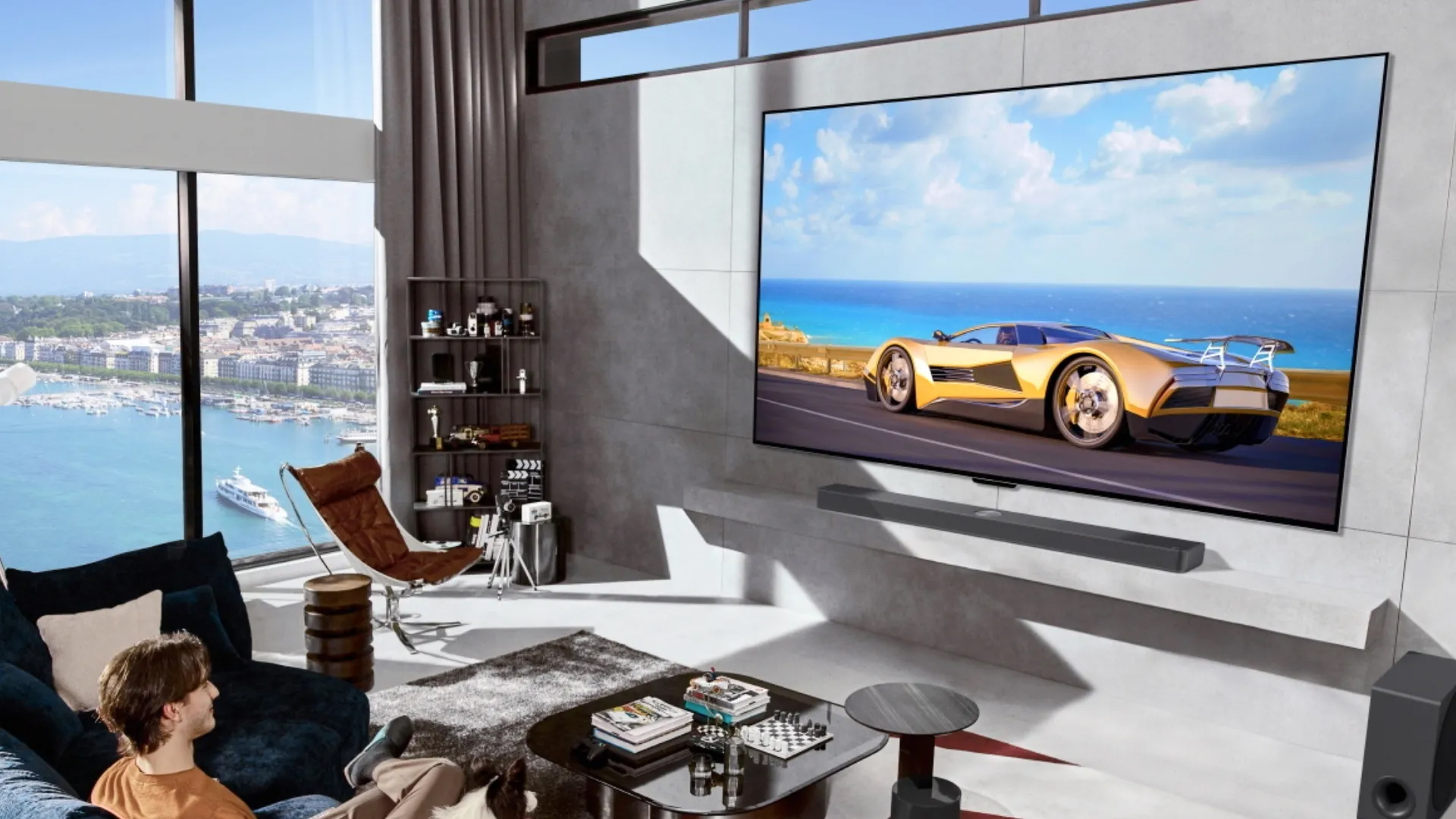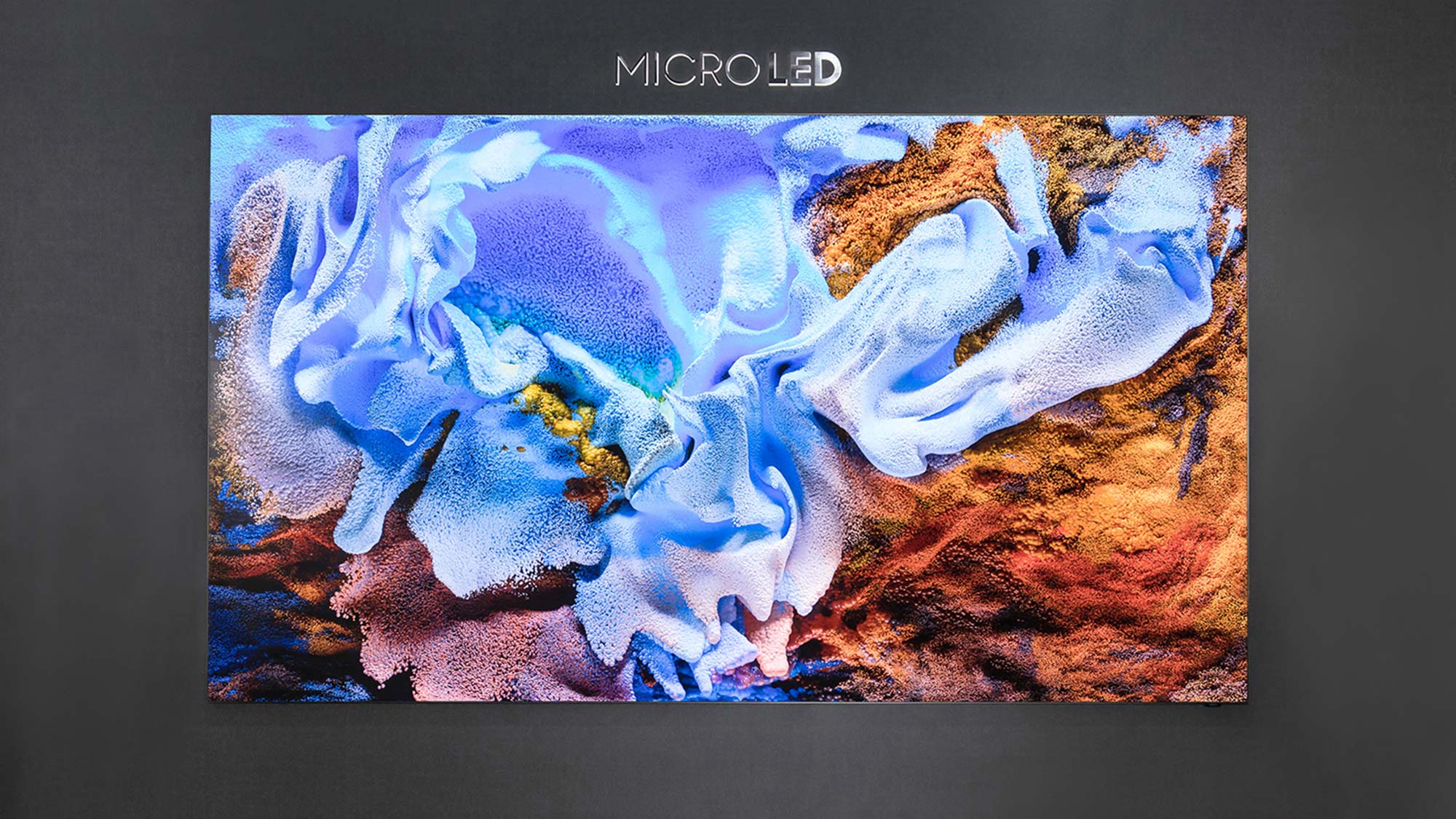What to expect from TVs in 2025 — OLED, Micro-LED and more
Bigger, brighter, and better TVs are on the horizon

TVs are getting a whole lot better, and quick. Gone are the days when you had to spend an arm and a leg to get decent picture quality from your TV. These days, TVs that cost under $1,000 offer 90% of the image quality as TVs that cost $3,000. You don't have to break the bank to enjoy one of the best TVs on the market.
But in 2024, not only did that trend continue, but we also saw huge improvements in the ultra high-end. This came through the adoption of a series of new technologies, like QD-OLED, helping make TVs look brighter and more vibrant, while retaining the deep black levels on offer by OLED panels.
So, TV manufacturers are done now, right? Smooth sailing and minor iterations in 2025, right? Not quite. We’re already seeing even more powerful technologies on the horizon, not to mention the fact that high-end tech is now poised to get cheaper.
The biggest TV developments from 2024
2024 saw the rise of a few different technologies, helping make TVs better than they ever have been before. That all starts at the high-end.
QD-OLED wasn’t a new technology in 2024, but it certainly got a wider release in 2024. QD-OLED technology blends OLED tech with quantum dots, giving the TV the deep inky black levels of an OLED panel, but with an added quantum dot layer, dramatically improving color volume. Really, it blends two of the most promising TV technologies of the past decade. The biggest QD-OLED models for 2024 include the Samsung S95D, which is arguably the best TV you can buy right now, along with the cheaper Samsung S90D.
2024 also saw the evolution of Mini-LED technology. Again, Mini-LED TVs have been around for a few years now, but they really stepped things up in 2024.
Leading the charge in the world of Mini-LEDs was the Hisense U8N, which represented a pretty big improvement over the Hisense U8K, thanks to a much higher brightness that seriously proved LEDs still have a place in a world of OLED panels.
Other trends include more art-style TVs, like the Hisense CanvasTV, and larger screen sizes, like TCL’s recent models.
So what’s next for TVs in 2025?

Some of what’s to come in 2025 is definitely more of the same — but in a good way. That starts with more Mini-LED TVs, and it’s a near-certainty that Hisense and TCL will continue to expand their Mini-LED lineups even more.
But 2025 could see a wider release of an even better tech. What makes Mini-LEDs so great is that they make use of very tiny LEDs, giving the TV excellent control over backlight for deeper black levels and less blooming in the image. But even a TV like the Hisense U8N, which has thousands of LEDs, can’t match the pixel-by-pixel control of an OLED TV, with its over 8 million pixels in a 4K panel.
The fix? Make those LEDs even smaller, and make TVs with more of them. That’s essentially what Micro-LED aims to achieve. Micro-LEDs are self-emitting, so they get rid of the concept of a backlight altogether, leveraging microscopic LEDs that act as individual pixels.
That’s right — Micro-LED displays get similar pixel-by-pixel control as OLED. There are some Micro-LED TVs out there right now, but they’re incredibly expensive, and while we certainly don’t expect to see Micro-LED TVs at $1,000 in 2025, they’ll hopefully get a wider release.
Micro-LED displays get similar pixel-by-pixel control as OLED.
Speaking of the price of TV technology, QD-OLED technology is here to stay, but while in 2024 it was reserved for some of the most expensive TVs in the industry, we’re hoping that it’ll bleed down to the upper mid-range for 2025, especially in Samsung’s lineup.
There are other trends likely to show up more in 2025 though. In 2024, we saw more TVs with matte displays, including the aforementioned Samsung S95D. This matte glass allows the glass to reject reflections better, and it makes a huge difference. The tech has become popularized by TVs like the Samsung The Frame, and newly, the Hisense CanvasTV and TCL NXTframe. We’d love to see it become more widespread.

It’s likely we’ll see more TVs in the style of Samsung's The Frame, too — but hopefully in 2025, they’ll improve even more. Current models look nice, but their image quality leaves a little to be desired. We’d love to see a QD-OLED version of The Frame.
Of course, separate from actual display tech, 2024 saw an explosion of AI hype — and we’re expecting that to become more prominent in TVs, too. Manufacturers already use AI for things like image upscaling, but we’ll likely see it more integrated into TV operating systems (like Google TV). We’ll have to see how that pans out, though.
Bottom line
Brighter, bigger, and better. That’s what to expect in 2025.
QD-OLED and Mini-LED (and possibly Micro-LED) will help make TVs brighter and offer better contrast, and the trend of manufacturers building larger and larger models will only continue.
Personally, I'm most excited by how that manifests in the mid-range — TVs from the likes of Hisense and TCL have been incredibly exciting over the past few years, and hopefully we’ll see those models get even better this upcoming year.
More from Tom's Guide
Sign up to get the BEST of Tom's Guide direct to your inbox.
Get instant access to breaking news, the hottest reviews, great deals and helpful tips.
Christian de Looper is a freelance writer who has covered every facet of consumer tech, including mobile, audio, home theater, computing, gaming, and even car tech. At Tom’s Guide, Christian covers TV and home theater tech, and has reviewed dozens of TVs, soundbars, and A/V receivers, including those from the likes of Samsung, Hisense, TCL, and Vizio.

